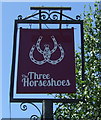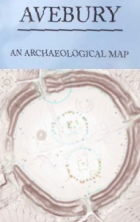<< Text Pages >> Norton Henge - Henge in England in Hertfordshire
Submitted by coldrum on Wednesday, 25 August 2010 Page Views: 10942
Neolithic and Bronze AgeSite Name: Norton Henge Alternative Name: Stapleton’s FieldCountry: England County: Hertfordshire Type: Henge
Nearest Town: Letchworth Nearest Village: Norton
Map Ref: TL232341
Latitude: 51.991694N Longitude: 0.207128W
Condition:
| 5 | Perfect |
| 4 | Almost Perfect |
| 3 | Reasonable but with some damage |
| 2 | Ruined but still recognisable as an ancient site |
| 1 | Pretty much destroyed, possibly visible as crop marks |
| 0 | No data. |
| -1 | Completely destroyed |
| 5 | Superb |
| 4 | Good |
| 3 | Ordinary |
| 2 | Not Good |
| 1 | Awful |
| 0 | No data. |
| 5 | Can be driven to, probably with disabled access |
| 4 | Short walk on a footpath |
| 3 | Requiring a bit more of a walk |
| 2 | A long walk |
| 1 | In the middle of nowhere, a nightmare to find |
| 0 | No data. |
| 5 | co-ordinates taken by GPS or official recorded co-ordinates |
| 4 | co-ordinates scaled from a detailed map |
| 3 | co-ordinates scaled from a bad map |
| 2 | co-ordinates of the nearest village |
| 1 | co-ordinates of the nearest town |
| 0 | no data |
Internal Links:
External Links:
I have visited· I would like to visit
JohnLindsay visited There is now a published article in Archaeology in Hertfordshire, Recent Research, 2015. Available in Welwyn Garden City Public Library, where there is a good local collection of material.
North Herts Archaeology Officer, Keith Fitzpatrick-Matthews said: "Henges are quite rare with only 60 known in the UK, so this is a significant find. "It's interesting as the only other henge known locally is on Western Hills, which is visible from the site we are working on."
"Ariel photographs of the area showed this rather extensive ring of chalk. "There's nothing visible at ground level so we decided to put a trench through it. "Having done that we found the chalk bank just survives underneath the plough soil and we have massive ditches inside and out."
The archaeologists are able to date the henge because of pottery they found which is associated with the Bronze Age.
"Grooved ware products were found, which dates the henge back to the third millennium BC," explained Keith Fitzpatrick-Matthews.
Source: BBC News
Note: "Henges are quite rare with only 60 known in the UK, so this is a significant find." There is an Open Day for the excavations, this Saturday 28th August
You may be viewing yesterday's version of this page. To see the most up to date information please register for a free account.
Do not use the above information on other web sites or publications without permission of the contributor.
Nearby Images from Geograph Britain and Ireland:

©2017(licence)

©2017(licence)

©2018(licence)

©2014(licence)

©2014(licence)
The above images may not be of the site on this page, they are loaded from Geograph.
Please Submit an Image of this site or go out and take one for us!
Click here to see more info for this site
Nearby sites
Key: Red: member's photo, Blue: 3rd party photo, Yellow: other image, Green: no photo - please go there and take one, Grey: site destroyed
Download sites to:
KML (Google Earth)
GPX (GPS waypoints)
CSV (Garmin/Navman)
CSV (Excel)
To unlock full downloads you need to sign up as a Contributory Member. Otherwise downloads are limited to 50 sites.
Turn off the page maps and other distractions
Nearby sites listing. In the following links * = Image available
760m ENE 68° Letchworth Cursus Cursus (TL239344)
3.2km E 83° Barrows under A505 Barrow Cemetery (TL264346)
3.3km SE 134° Weston Hill Henge* Henge (TL256319)
3.4km WSW 243° Wilbury Hill* Hillfort (TL202325)
4.8km ENE 68° Bygrave Barrows Barrow Cemetery (TL2759935981)
5.1km E 86° Tree Barrow Round Barrow(s) (TL2831834612)
5.4km NNE 31° Arbury Banks Barrow/hut circle Round Barrow(s) (TL2584638770)
5.5km NE 34° Arbury Banks (Hertfordshire)* Hillfort (TL262387)
5.5km NW 316° Etonbury Fort* Hillfort (TL1929637984)
6.4km SSW 195° Priory Well (Hertfordshire)* Holy Well or Sacred Spring (TL217279)
6.5km NE 56° Highley Hill Round Barrow(s) (TL2856637881)
6.6km NNE 33° Ashwell Village Museum* Museum (TL2668539684)
6.6km ENE 59° Odsey Round Barrow(s) (TL2880337659)
6.8km NE 35° Seven Springs (Ashwell)* Holy Well or Sacred Spring (TL270398)
6.8km SW 226° North Herts Museum* Museum (TL18342926)
6.9km ENE 66° Deadman's Hill Barrow Cemetery (TL294371)
7.0km ENE 68° Galley Hill (Sandon) Misc. Earthwork (TL2961136893)
7.8km ENE 62° Gallows Hill (Hertfordshire)* Round Barrow(s) (TL30023801)
7.9km ESE 123° Cumberlow Green hoard Ancient Mine, Quarry or other Industry (TL3030)
8.9km ENE 58° Morden Grange Round Barrow(s) (TL30653901)
9.1km ENE 65° Coombe Farm Round Barrow(s) (TL313382)
9.7km ENE 64° Lower Thrift Farm Barrow Round Barrow(s) (TL3184438531)
9.8km ESE 121° Cottered Stones* Natural Stone / Erratic / Other Natural Feature (TL318293)
9.8km ENE 78° Orwellbury Holy Well or Sacred Spring (TL3279836387)
10.2km ENE 60° The Thrift Round Barrow(s) (TL320394)
View more nearby sites and additional images






 We would like to know more about this location. Please feel free to add a brief description and any relevant information in your own language.
We would like to know more about this location. Please feel free to add a brief description and any relevant information in your own language. Wir möchten mehr über diese Stätte erfahren. Bitte zögern Sie nicht, eine kurze Beschreibung und relevante Informationen in Deutsch hinzuzufügen.
Wir möchten mehr über diese Stätte erfahren. Bitte zögern Sie nicht, eine kurze Beschreibung und relevante Informationen in Deutsch hinzuzufügen. Nous aimerions en savoir encore un peu sur les lieux. S'il vous plaît n'hesitez pas à ajouter une courte description et tous les renseignements pertinents dans votre propre langue.
Nous aimerions en savoir encore un peu sur les lieux. S'il vous plaît n'hesitez pas à ajouter une courte description et tous les renseignements pertinents dans votre propre langue. Quisieramos informarnos un poco más de las lugares. No dude en añadir una breve descripción y otros datos relevantes en su propio idioma.
Quisieramos informarnos un poco más de las lugares. No dude en añadir una breve descripción y otros datos relevantes en su propio idioma.